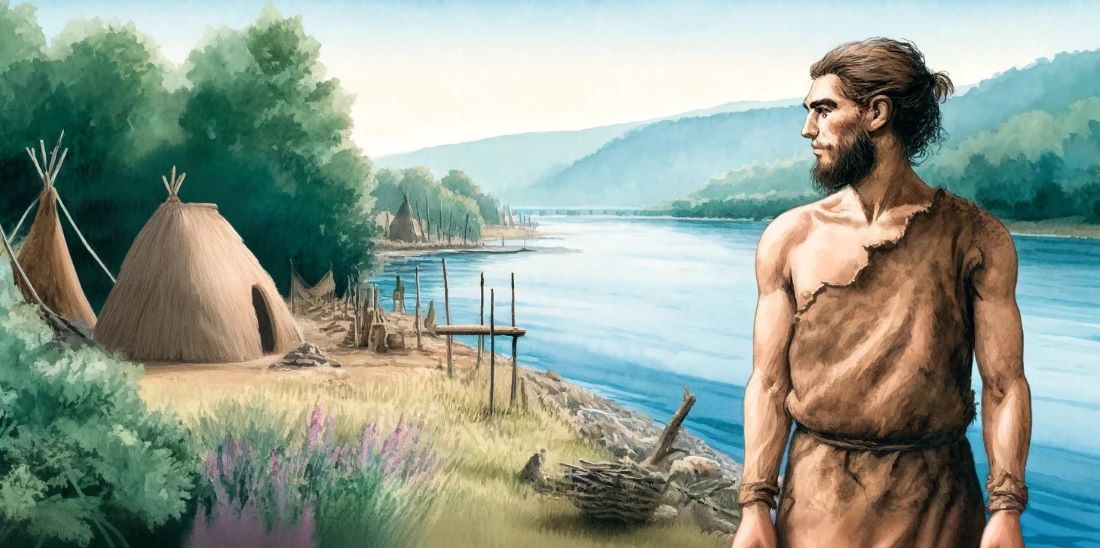Lepenski Vir is a significant Mesolithic and Neolithic archaeological site on the Danube River’s right bank in the Đerdap Gorge, eastern Serbia. Renowned for its remarkable continuity, the site spans several thousand years, showcasing a transition from hunter-gatherer to early agrarian societies. It is particularly famous for its distinctive, trapezoidal-shaped houses and enigmatic stone sculptures that hint at a complex spiritual life. The unique layout of the settlement and its artifacts provide invaluable insights into the social and religious organization of early European cultures.
Discovery and Excavation
Lepenski Vir was discovered in 1965 during archaeological excavations carried out in advance of the construction of the Đerdap Dam. The excavations were led by Professor Dragoslav Srejović, a Serbian archaeologist who is considered to be one of the most important figures in the study of the Prehistory of the Balkans. Initially, the significance of the findings was not fully understood, but as excavations continued, the site revealed layers of human occupation that were both rich in culture and remarkably well-preserved.
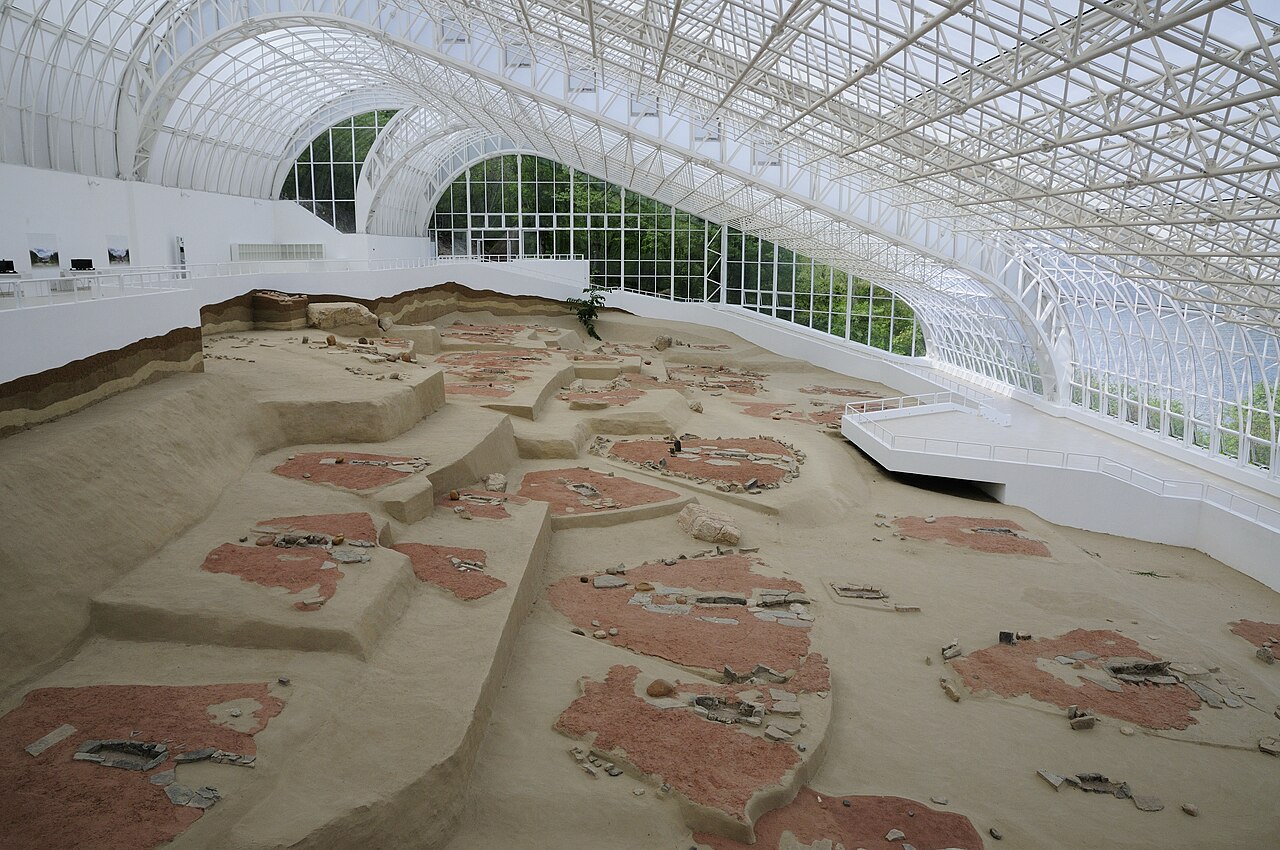
The importance of Lepenski Vir became apparent with the discovery of its unique architectural elements and monumental stone sculptures. The site was meticulously excavated over several years, uncovering houses that were strategically aligned with the Danube River, providing insights into the advanced planning and social structure of its inhabitants. These findings challenged previous notions about the lifestyle and capabilities of Mesolithic communities in Europe.
Human Geography and the Emergence of Advanced Mesolithic Culture
During the late Pleistocene and the transition into the Holocene, human populations were drastically reduced, living in small groups that faced harsh climatic conditions and daily survival challenges. It was during the early Holocene, around 9500 BCE, that the area now known as Lepenski Vir in the Đerdap Gorge began to be settled. This period marked a significant shift from nomadic gathering to the establishment of permanent settlements, a phenomenon that heralded the dawn of advanced Mesolithic cultures.
Lepenski Vir’s site offered natural advantages crucial for its selection as a permanent settlement. It was strategically positioned to provide natural shelter against harsh weather and winds, which, combined with a temperate climate, made it an ideal location for year-round living. The geographical features of the Đerdap Gorge also facilitated access to diverse resources, enhancing the sustainability of the settlement.
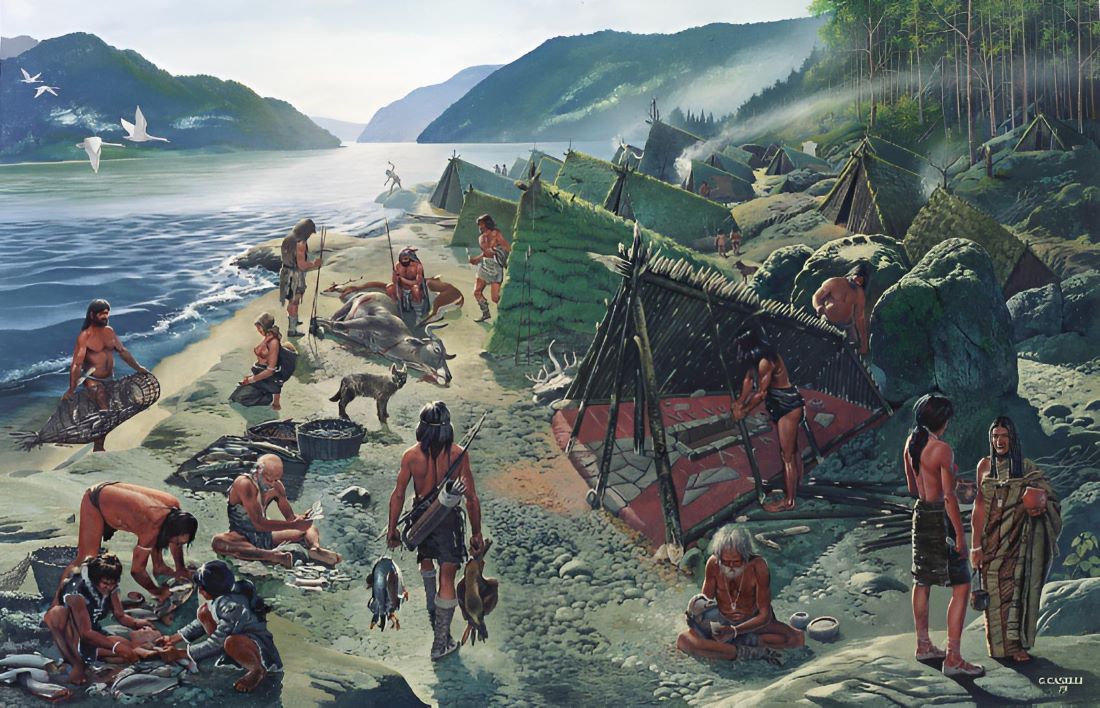
Archaeologists have identified several dozen settlements that likely belonged to this culture, extending along the Danube River. The geography of these settlements is particularly interesting; they are situated not more than a hundred meters from the river yet stretch for several tens of kilometers along its course. This strategic placement suggests a culture deeply connected to the river, utilizing its resources extensively while also exploiting the land nearby for agriculture and animal husbandry.
One of the most interesting aspects of Lepenski Vir is the alleged role of a whirlpool in the Danube River, which according to some theories, might have significantly eased the fishing efforts of its inhabitants. Large fish such as sturgeon and beluga, which are known to migrate up the Danube to spawn, were reportedly caught with greater ease due to this natural feature. The abundant fish resources, particularly species rich in nutrients like roe, undoubtedly played a central role in the diet and culture of the Lepenski Vir community, as evidenced by archaeological findings of fish remains at the site.
Daily Life in Lepenski Vir
From 9500 to 5500 BCE, the inhabitants of Lepenski Vir thrived through the Mesolithic to the Neolithic era, along the Danube River. Their lives were marked by fishing, hunting, foraging, and the beginnings of agriculture and animal domestication.
The settlement featured distinctive trapezoidal houses built from wood and mud on stone foundations, arranged in a circular pattern around a central plaza. This layout reflects a sophisticated social organization and possibly communal living practices.

The diet of Lepenski Vir residents primarily relied on fishing, with sophisticated tools and techniques suited to the river environment. Evidence suggests the use of fishing gear like hooks, which were crucial for their subsistence. Additionally, they gathered wild plants and fruits, enriching their diet with vital nutrients.
In the Neolithic period, they began cultivating cereals such as wheat and barley and domesticated animals including pigs, cattle, and sheep. This transition indicates significant advancements in their lifestyle.
Artisanship was also notable, with the creation of pottery from clay and tools from stone and bones. Jewelry made from shells and animal bones highlights their aesthetic appreciation and craftsmanship.
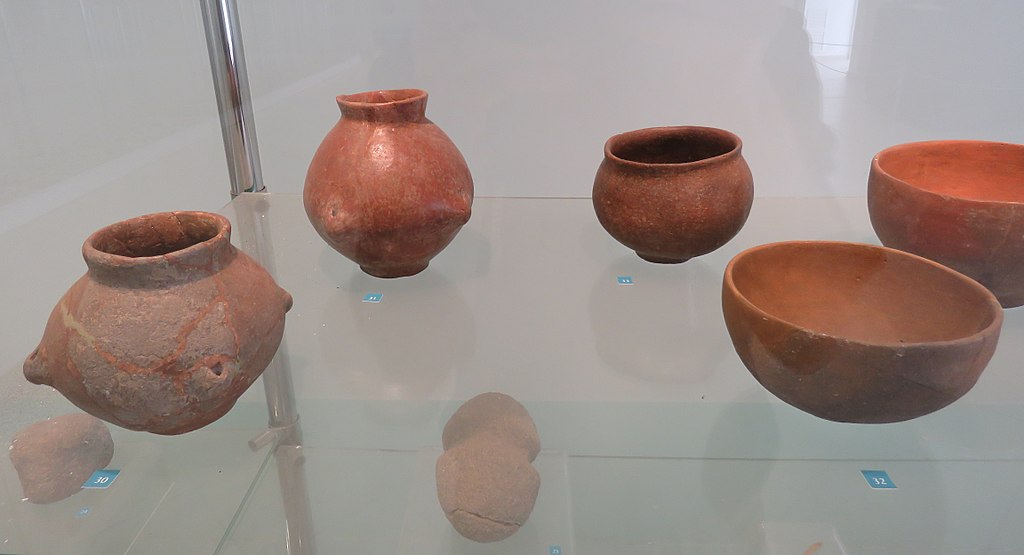
Stone sculptures found at the site, carved from river pebbles depicting humans and animals, suggest these had religious significance, pointing to a rich spiritual life.
Despite environmental challenges, the people of Lepenski Vir developed a rich culture that has left a significant legacy, shedding light on the complexities of early human societies.
The Neolithic Transition in Lepenski Vir
During the Neolithic period, around 6500 BCE, Lepenski Vir experienced significant cultural and demographic changes with the arrival of new settlers, likely from the region of modern-day Anatolia. This migration marks a crucial period in the site’s history, characterized by coexistence and integration rather than conflict with the existing inhabitants.
The newcomers introduced domesticated animals such as cattle, sheep, and pigs, which were absent in the Mesolithic lifestyle of the original Lepenski Vir residents, who had only domesticated dogs. These dogs likely played a role in hunting and possibly in religious ceremonies, perhaps even as sacrificial animals. The introduction of farming and livestock significantly shifted the subsistence strategies of the Lepenski Vir community, integrating agriculture with their traditional fishing and foraging practices.
Stone Sculptures of Lepenski Vir
The stone sculptures of Lepenski Vir stand as one of the most enigmatic and significant artistic achievements of prehistoric Europe. Carved from the river stones found along the banks of the Danube, these sculptures date from approximately 7000 to 6000 BCE. The figures predominantly depict humanoid forms, often with exaggerated, angular features and fish-like attributes, which reflect the symbiotic relationship between the inhabitants and the riverine ecosystem. Some of the sculptures are believed to represent deities or ancestral figures, playing a central role in the spiritual and communal life of the settlement.
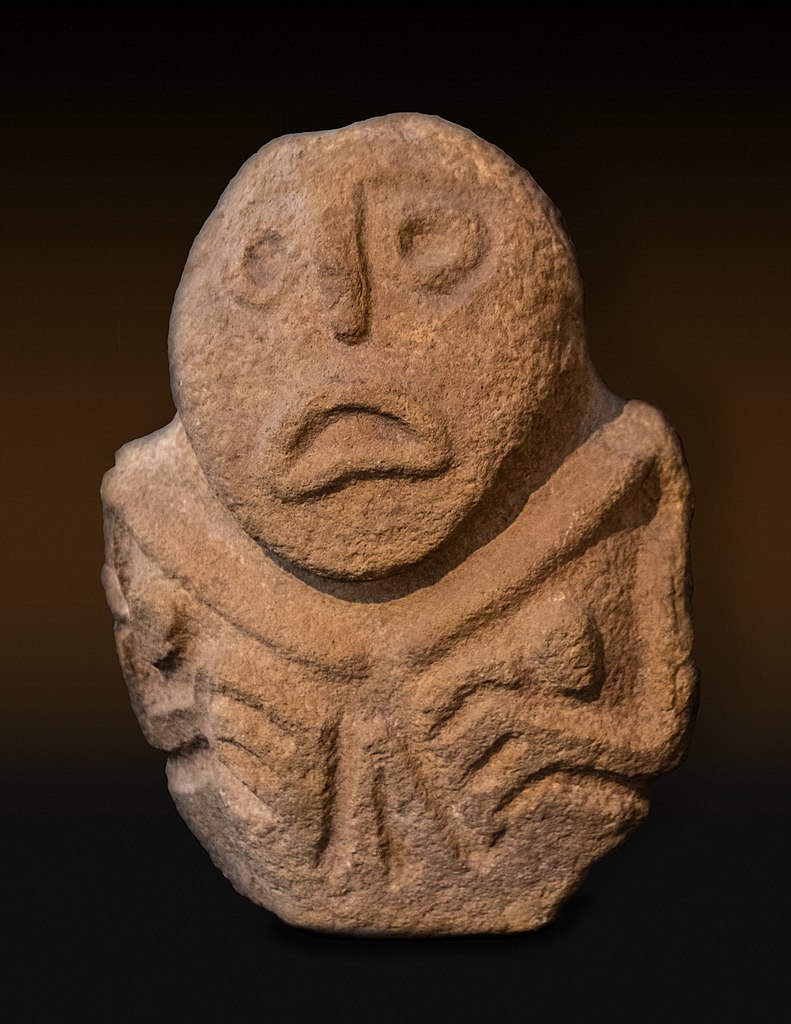
Scholars believe that these sculptures had multifaceted roles within the community, possibly serving not only as religious idols but also as markers of social or territorial boundaries. Their distinct style and craftsmanship suggest a highly developed artistic tradition. The faces and bodies are stylized rather than realistic, with large, open eyes and sometimes ambiguous facial expressions. This artistic expression provides valuable insights into the cultural and religious dynamics of Lepenski Vir, indicating a community with complex spiritual beliefs and a deep reverence for its natural surroundings.
These artifacts highlight the advanced level of socio-cultural development at Lepenski Vir and are key to understanding the spiritual and daily lives of its people. They also underscore the artistic ingenuity and the deep-seated human impulse to represent the world symbolically, a trait that threads through the fabric of human history.
Conclusion
Much more could be written about Lepenski Vir, yet delving deeper would surpass the scope of a single blog post. This piece aimed to provide fundamental insights into the lives of its inhabitants during a transformative era and to highlight the magnificent culture that emerged on European soil around 9500 BCE. By exploring the blend of architectural innovation, social structure, and spiritual life, we invite readers to appreciate the depth and complexity of this ancient community that significantly shaped early European history.
Historical Challenge: Can You Conquer the Past?
Answer more than 18 questions correctly, and you will win a copy of History Chronicles Magazine Vol 1! Take our interactive history quiz now and put your knowledge to the test!

